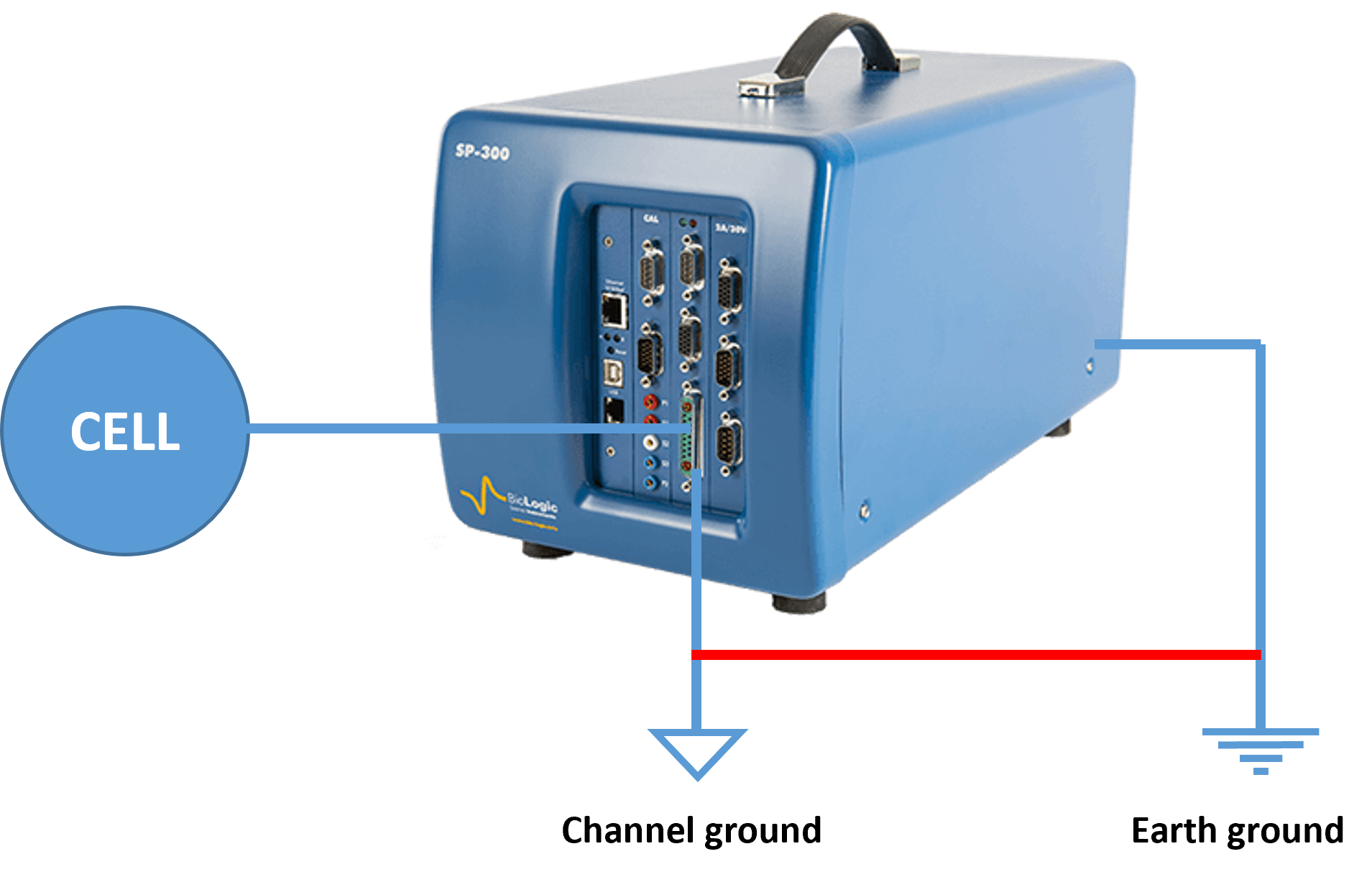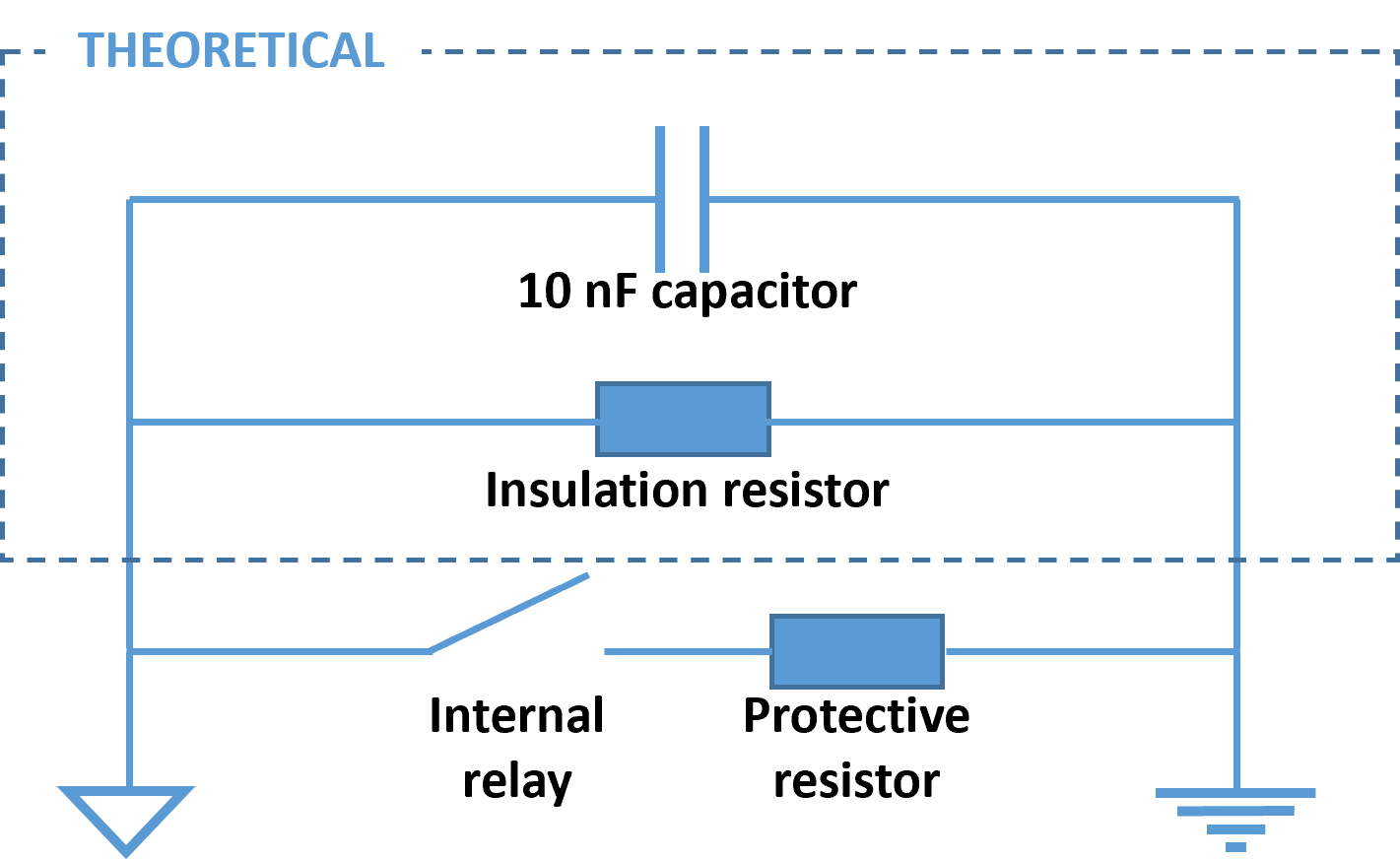Connection to the cell – Part 1 – What is “ground”?
Latest updated: June 18, 2025Depending on customer applications, the setup must be adapted to optimize signal quality or avoid safety issues. For this reason, different connection types are available.
Summary & general information: which connection mode to use?
The following flow diagram demonstrates which connection mode you should use for your application.

Summary:
What is “ground”?
The ground is generally used as a reference potential from which other potentials can be measured. Convention dictates that the ground potential will be 0 volt. In general terms, BioLogic instruments are “grounded”, which means that the ground of the channel board is directly linked to the earth through the power cord. This is done for safety reasons. It is used as a return path for the current for safety reasons or to protect measured signals from external electric fields in a Faraday cage.
This connection type is generally suitable for most applications, but depending on the cell or its environment, another connection type is also available on some instruments*. In these cases, the ground is not directly connected to the earth ground: the channel board is said to be “floating” (Figure 1)

Fig 1. Schematic of a floating channel board (blue) and a grounded one (red)
*floating connection type only available on premium range potentiostats.
When is the “floating” connection type required?
When the cell is directly connected to the earth, the “floating” connection type is generally used. This case can occur, for example, when measurements are performed on a sample inside an autoclave, or on pipelines. Using a floating channel board prevents the formation of a ground loop, generally considered to be problematic (Figure 2). This issue is due to the difference of potential between two different earth grounds resulting in leakage current, which is disturbing and which affects the measurement quality. The current measurement will also be affected.

Fig 2. on the left, earth loop issues due to the use of a grounded channel board and an earthed cell. On the right, a correct use of the floating connection type.
The isolation of the channel ground from the earth ground is carried out by an internal relay inside the potentiostat board, making the channel board potential “float”. When the internal relay is open, the isolation between both grounds is not infinite and can be represented using a resistor in parallel with a capacitor. Typical values of 10 MΩ and 10 nF are admitted. When the “grounded” connection mode is used, the internal relay is closed. A protective resistor of several kilo-Ohms is located right behind this relay, to limit the current passing through the ground (Figure 3).

Fig 3. switching system from floating to grounded connection mode.
Another configuration for “floating” connection types.
The floating connection type is also highly recommended when the auxiliary inputs and/or outputs are connected to a non-floating device. For example, using an oscilloscope to monitor the voltage of the cell through the E monitor output will directly connect the channel ground of the potentiostat board to the earth ground.
To keep the channel floating in this kind of situation, the IS1 isolation module can be used (more information inside Technical Note 31).
In order to check that the board remains in “floating” mode while using auxiliary inputs and outputs, it is possible to perform a continuity test between the channel ground and the earth ground.
Despite the use of “floating” mode, the instrument remains compliant with the IEC 61010-1 standard safety requirements for electrical equipment. Only the channel board inside the potentiostat can be considered to be floating, the chassis is always connected to the earth ground. A green plug is available on the back panel of every Bio-Logic potentiostat for example to connect a Faraday cage for shielding purpose.





